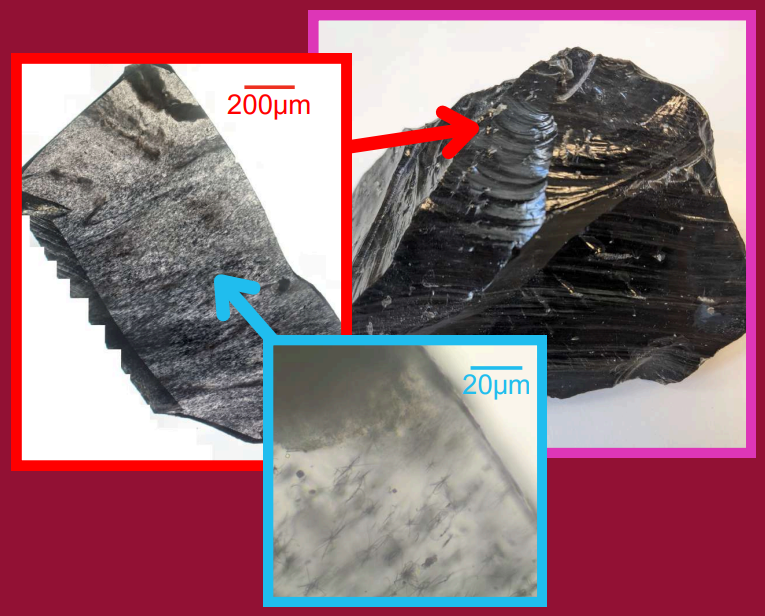Obsidian from yesterday to tomorrow
The aim of the thesis is to characterize obsidian rocks from Mexico (Coll. F. Gendron, MNHN), the United States and Turkey. Viscosity measurements will be used to determine their rheological properties. Understanding the origin of the color (role of iron, bubbles, nanoparticles) will be carried out using various methods: optical spectroscopy, SEM and TEM, synchrotron radiation to determine iron redox.

Start: 01 January 2024
End: 01 December 2026
Supervisors :
Daniel Neuville, Nadine Schibille, Laurent cormier
Status: In progress




